How to Recover Data from Dead/Failed/Crashed SSD
When people want to change their hard drive, they typically switch from HDD (Hard Disk Drive) to SSD (Solid-State Drive). This is because SSD is believed to be better and have higher security than HDDs. But then, it doesn’t mean that you can’t lose files from an SSD device; data loss also occurs on SSD devices.
In this guide, we'll walk you through the process of recovering data from a dead SSD. Whether your SSD is not being detected or it's simply not booting, we'll show you how to recover your lost files.
When you lose files from an SSD, the recovery process is the same as that of an HDD; however, you just need to have a data recovery software that supports SSD recovery. In this article, you’ll learn the best practices to protect files saved in your SSD device and how to attempt recovery if you lost some.
Common symptoms of a Dying/Failure SSD
Much like hard disk drives (HDDs) can have bad sectors, solid-state drives (SSDs) can develop faulty blocks for a variety of reasons. This can lead to reduced read and write speeds, prompt error messages asking for repairs, or even cause running applications to hang or crash.
If a faulty block is identified, the system might refuse to read or write data to it, making files either unreachable or unmodifiable. When a bad block is discovered after data has already been saved, data recovery procedures might be required to retrieve the information.
Both Mac and Windows operating systems may display messages urging file system repairs for several reasons, including a disrupted port connection or the occurrence of bad blocks on the drive.
Repeated crashes during the boot-up process may signify the existence of bad blocks on the SSD. It's highly advisable to back up your data before the drive fails entirely.
In uncommon scenarios, the SSD may switch to a read-only mode, preventing any new data from being written while still permitting access to existing data. This too is an indication of drive impairment.
Is SSD Data Recovery Even Possible?
Yes is the clear-cut response. From an SSD device, lost data can be recovered. However, there are certain things you need to know in order for SSD data recovery to be successful. Have you ever heard of the SSD TRIM? When you utilize an SSD as your primary hard drive, Windows 7 through 10 will often enable the TRIM command automatically.
TRIM command helps to improve the functional speed of an SSD and also prolongs the lifespan. Disabling this command is not advisable, but some advanced PC users do have it disabled for specific (technical) reasons. If enabled, the TRIM ATA command allows the OS to tell the SSD to delete data from specific blocks that are no longer in use to improve read/write speeds.
The operating system triggers the TRIM command, and as such, if data loss occurs due to a sudden power failure, file system corruption, software error, partition loss, or other similar reasons, the OS won’t have time to carry out “Trimming” on the SSD, hence, making SSD data recovery possible.
How to Increase Chances of Successful SSD Recovery?
If TRIM is enabled on your Windows PC, for each time the command runs, every file lost from the SSD up to that time becomes practically irrecoverable. So, to increase the chances of successful SSD recovery, you should try to perform the recovery before the TRIM command runs or simply disable the command. Here are some tips that can help.
Remove the SSD Immediately
If you notice that some important data and files are missing from your SSD device, it is advisable to shut down the system and remove the drive immediately. Yes, you may convert it into an external drive and connect it to another computer to carry out the recovery process. This is because if you leave the SSD on that PC and reboot, the TRIM command will run automatically (if enabled), making data recovery almost impossible.
Pick a Reliable Dead SSD Data Recovery Software
Not all data recovery apps can successfully retrieve lost files from dead SSD device. You have to make your choice carefully. The DiskInternals Data Recovery software apps (Uneraser and Partition Recovery) can read and recover files from SSDs with up to 95 percent efficiency. SSD data recovery is time-sensitive, so you must act fast.
Disable TRIM Command
If you have just one system and the primary drive is an dead SSD, you may want to disable the TRIM command, so even if you lose data from the drive, you won’t have to be in haste to recover it or start looking for someone to lend you their PC so you can use for the recovery (as explained in the first point).
To disable TRIM, open the command prompt as admin and run the following command: fsutil behavior set disabledeletenotify 1. After that, run the check command to confirm TRIM has been disabled; the check command is fsutil behavior query disabledeletenotify. The output should be DisableDeleteNotify = 1 (Enabled) to prove TRIM is disabled. You can re-enable the TRIM command anytime you wish; it actually helps to improve SSD read and write speeds.
How to Recover Data from Dead/Failed/Crashed SSD on Windows 10/11
Well, enough of the TRIM command skepticals. Using a professional SSD data recovery software, you can still get back your files from an SSD device, regardless of the TRIM status. The whole information about TRIM is to improve the chances of successful recovery.
With TRIM disabled or removing the SSD and putting it on another PC, the chances of recovering all your lost files can get to 99 percent, and on the flip side, the chances could be lower than 92 percent. So you see, you can still recover your files either way – you just need a good app.
DiskInternals Uneraser is a powerful data recovery software for recovering data loss due to minor scenarios such as deleted partitions or corrupt file systems. If you need to recover files from a badly damaged SSD, then you should use DiskInternals Partition Recovery. Notwithstanding, Uneraser and Partition Recovery are guaranteed to recover files from dead SSDs efficiently.
The DiskInternals Data Recovery tools support all known file systems, including FAT12/16/32, APFS, ExFAT, RomFS, HFS+(Mac), Ext2/3/4, ReFS, NTFS, and others. DiskInternals data recovery apps come with a built-in Wizard interface to guide the users every step of the way, making the apps extremely easy to use for everyone – both experts and novices.
Use DiskInternals Uneraser for easy and fast recovery
Step One:
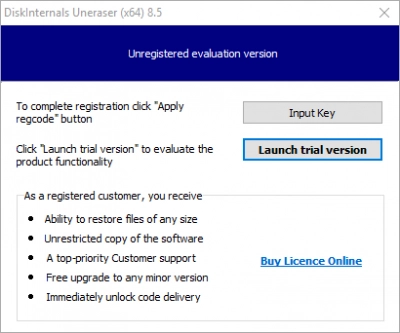
Download and install DiskInternals Uneraser software on the PC (or another PC if you’re disconnecting the dead SSD from the main computer to avoid TRIM command interference). Then launch the Uneraser software and select the affected SSD device.
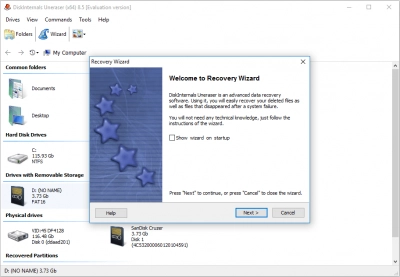
Step Two:
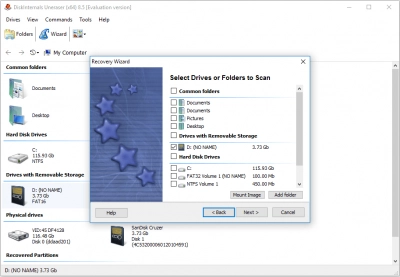
Select the file formats you want to recover (you can select all file types) and proceed with choosing Full Recovery mode. This mode will search deeply into the dead SSD and recover any chunk of file in hidden partitions.
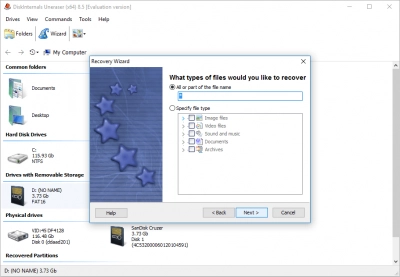
Step Three:
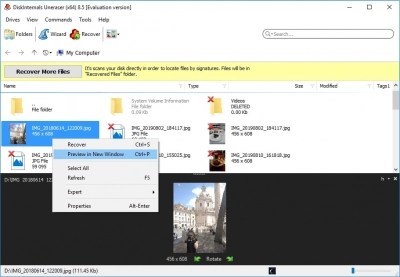
Wait for the scan to run completely (it may take a long time, depending on the data volume), and you’ll see the permanently deleted files marked with a red asterisk. You can preview the recovered files for free before proceeding to re-save them or export to remote storage via FTP.
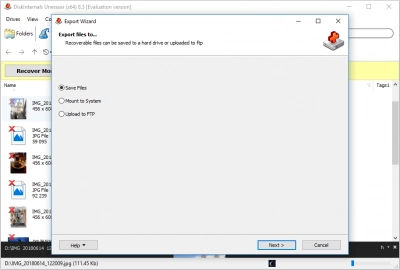
DiskInternals Partition Recovery for complicated cases
The DiskInternals Recovery tools support all known file systems, including FAT12/16/32, APFS, ExFAT, RomFS, HFS+(Mac), Ext2/3/4, ReFS, NTFS, and others. DiskInternals data recovery apps come with a built-in Wizard interface to guide the users every step of the way, making the apps extremely easy to use for everyone – both experts and novices.
Step One:
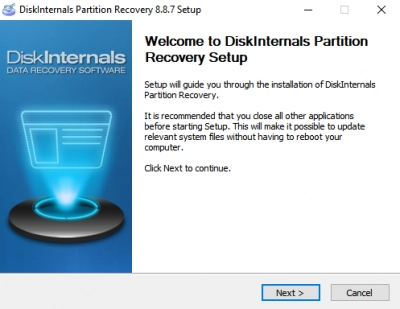
Download and install DiskInternals Partition Recovery software on the PC (or another PC if you’re disconnecting the SSD from the main computer). Then launch the recovery software and select the affected SSD device.
Step Two:
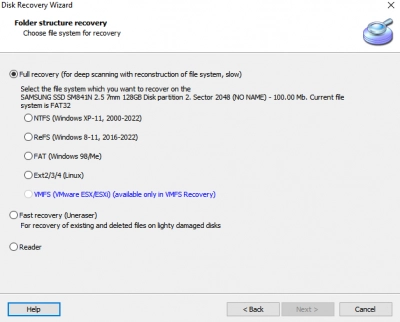
Select the file formats you want to recover (you can select all file types) and proceed with choosing a recovery mode. The Fast Recovery (Uneraser) option recovers recently deleted data; choose the Full Recovery option for wholesome recovery.
Step Three:
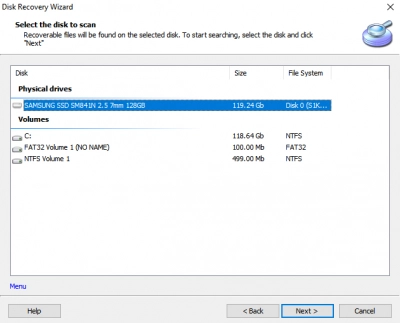
Wait for the scan to run completely (it may take a long time, depending on the data volume), and you’ll see all your lost files indicated with a red asterisk. You can preview the recovered files for free before proceeding to re-save them or export to a remote storage via FTP.
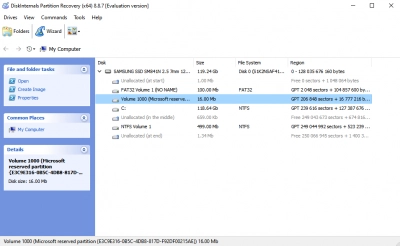
Note: While file preview is free, saving the recovered files requires the license.
Can Data Be Recovered From a Failing SSD?
A failing SSD means that the solid-state drive is bad – constantly crashes – and has many bad sectors, logically. When a storage drive fails, it becomes difficult for the computer to read and access the data saved on the drive, which can affect data recovery efforts. So, if faced with such a situation, you have to take extra steps to recover your files from such a drive.
One of the things you should do is to create a Disk Image of the failing SSD using a reliable software like DiskInternals Uneraser. The disk image will serve as a cloned version of the SSD in an image format. Once this is achieved, you can scan the Disk Image using a professional data recovery software – Partition Recovery – to retrieve your lost files.
Yes, data can be recovered from Disk Images when you use the right tool. Thus, when your computer starts exhibiting signs of a failing hard drive (in this case, SSD), it is advisable to stop saving new files to the drive, back it up as a disk image, and get another (new) SSD where you can restore the disk image to.
Accidentally Deleted Data/From Dead SSD Drive?
Don’t panic. In whatever way data was lost from your solid-state drive, you can still recover it. DiskInternals Partition Recovery can retrieve data from SSD devices, regardless of the data loss cause. So, whether you accidentally permanently deleted files from your SSD device, you can still have the data back.
Of course, there are plenty of other data recovery software applications that can help you recover accidentally deleted files from SSDs, but you should use a trusted one for higher efficiency and data security. But then, before using a data recovery software, have you checked the “Recycle Bin?” the deleted file may still be hiding out in there.
How to Restore Data from a Corrupted SSD?
If the DiskInternals Uneraser was unable to recover the files you needed to get back, then you should try Partition Recovery. DiskInternals Partition Recovery is a more advanced software with higher efficiency in recovering files from all kinds of storage media. Interestingly, you don’t have to pay until you recover all the files you ever wanted to get back.
In Full Recovery mode, DiskInternals Partition Recovery will attempt to fix corrupt SSDs and repair the file system structures; so, basically, this is not only a data recovery software, but it also helps to repair corrupt partitions and drives – a complete solution for all your data recovery needs on Windows OS.
Best Practices SSD Protection
Are there any tips on how to protect SSDs? Well, you can never be too protective to prevent data loss. But then, these best practices can help you to a great extent if you key into them.
- Don’t allow your SSD to be completely full – once the storage is getting used up, get a bigger SSD and transfer your data from the old (small one) to the new (bigger one). You may consider splitting data between the two by setting up a RAID.
- Disable the TRIM command if you know you may not be able to act very fast when data loss occurs.
- Always be mindful of how you physically handle the SSD device; don’t let it fall to the ground for any reason.
Step-by-Step Guide for Fix a Dead/Failed/Crashed SSD
1. Re-plug SATA Data Cable
This is a method for restarting a PC that involves SSDs. It involves unplugging the SATA cable and turning on the PC, ensuring that the BIOS remains on. After a period of time, the PC is turned off and the SATA cable is reconnected. Finally, the BIOS is accessed to verify if the SSD is booting correctly or not.
2. Use Power Cycle Method
This method is known as the CPR method and can be used to revive an SSD. To do this, disconnect the data cable and connect the SSD to the power cable to allow it to charge for some time. After disconnecting the power cable, repeat the previous steps several times until the SSD becomes accessible when you reconnect the data cable.
3. Run CHKDSK
If file system errors cause your SSD to fail or crash, you can use the CHKDSK command to fix the issue.
To do this, open the Command Prompt from the Windows toolbar and enter the command "chkdsk g: /f" to start the process.
After the process is complete, the prompt will indicate this and you can simply type "exit" to end the process. With any luck, your SSD data should be accessible after running this command.
4. Update Firmware of Dead SSD
Every SSD comes with a firmware update tool. To use it, first check the properties of your SSD drive in Windows device manager to obtain the details and hardware ID. Then, install the SSD firmware update tool and check if there are any available updates for your SSD. Finally, update the firmware and hope that the SSD starts functioning properly again.
5. Format SSD
Only proceed with these steps if you can access your data and move it around. Before beginning, make sure to back up all data from the crashed SSD partition.
To format the SSD, go to the Start button and search for Disk Management. Select the SSD drive you want to format, right-click it, and select the Format option. Set the cluster size and file system, then tick the "Perform a quick format" option.
Conclusion
This article comprehensively explains how to recover files from SSD devices and how you can protect your files in an SSD device. You may want to install a data recovery software forehand so that when data loss occurs, you won’t be caught in the web trying to be in haste.
DiskInternals Data Recovery apps – DiskInternals Uneraser and Partition Recovery – are two impressive data recovery solutions for Windows OS; they can recover data from SSDs, regardless of the data loss cause, and they are easy to use. You don’t also have to pay until your files are fully recovered.
FAQ
How do I recover files from a faulty SSD?
DiskInternals Uneraser is a powerful data recovery software for recovering data loss due to minor scenarios such as deleted partitions or corrupt file systems. If you need to recover files from a badly damaged SSD, then you should use DiskInternals Partition Recovery. Notwithstanding, Uneraser and Partition Recovery are guaranteed to recover files from SSDs efficiently.
Can a failed SSD be repaired?
One of the things you should do is to create a Disk Image of the failing SSD using a reliable software like DiskInternals Uneraser. The disk image will serve as a cloned version of the SSD in an image format. Once this is achieved, you can scan the Disk Image using a professional data recovery software – Partition Recovery – to retrieve your lost files.
Is it harder to recover data from an SSD?
Yes, recovering data from an SSD is really difficult. By default, SSDs have TRIM enabled, which implies that deleted files and formats would entirely wipe out the SSD, rendering data recovery impossible.
How to Check the Health Of a SSD?
1. Check the Windows Event Viewer: You can check the Windows Event Viewer to see if there are any error messages related to the SSD. To do this, open the Event Viewer and go to Windows Logs > System. Look for any error messages that mention the SSD and investigate them further.
2. Check the SMART data: The SMART (Self-Monitoring, Analysis and Reporting Technology) data provides information about the health of the SSD. To check the SMART data, download and install a program that can read the data, such as CrystalDiskInfo, and check the health status.
How Does SSD Store Data?
An SSD (Solid-State Drive) stores data using a series of interconnected flash memory chips. These flash memory chips use a type of non-volatile memory that can store data even when power is removed. The data is stored in memory cells that are organized into pages and blocks.
